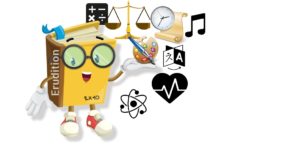Olaudah Equiano’s History-Audio, Video, Articles, Links, Worksheets


 Add to favorites tutorial
Add to favorites tutorialOlaudah Equiano’s History-Audio, Video, Articles, Links, Worksheets
1745 – 1797
 Olaudah Equiano was well known in history as a writer who wrote his autobiography “The Interesting Narrative of the Life of Olaudah Equiano, or Gustavus Vassa, the African.” Equiano became an active abolitionist. He lectured against the cruelty of British slaveowners. He spoke out against the English slave trade. He worked to resettle freed slaves.
Olaudah Equiano was well known in history as a writer who wrote his autobiography “The Interesting Narrative of the Life of Olaudah Equiano, or Gustavus Vassa, the African.” Equiano became an active abolitionist. He lectured against the cruelty of British slaveowners. He spoke out against the English slave trade. He worked to resettle freed slaves.
- Day 1-2 Articles
- Day 1-Video Intro
- Day 2 -Cartoon Video
- Day 3-8 Audio Book
- Day 1-8 Worksheets
- Online Quizzes
- Slavery Terms
- Slavery Terms
- Study Notes of Key Events
- Read the Book
- Q & A- Chapter Reading Quizzes
- Flash Cards
Day 1
Read Any Short Article Summary
PBS – Short Article about the History of Olaudah Equiano
Life & Times of Olaudah Equiano Article
Summary of the Life of Olaudah Equiano
Day 2
[roboshot url=”http://school.discoveryeducation.com/schooladventures/slavery/equiano.html” newpage=”TRUE” link=”TRUE” refresh=”TRUE”]
Discovery Eduction – Wonderful explanation of the Life of Olaudah Equiano, who was a slave on 3 Continents. The use of a timeline makes it very clear.
Read through the timeline and follow this lesson from Discovery Education…
Following Olaudah Equiano’s Life
- Use a globe or map, string, and markers (or overhead markers if using laminated maps) to map Olaudah Equiano’s travels. As they read through “A Slave on Three Continents,” ask students to draw dots and lines that connect the various locations. If using markers, assign two colors: one for the years he was enslaved and the other for his life as a freeman
- or Print this Map & Use 2 Different Colored Markers. As they read through “A Slave on Three Continents”, using markers, assign two colors: #1 one for the years he was enslaved and #2 the other for his life as a freeman
Day 1
Olaudah Equiano’s account of slavery
Day 2
The Interesting Narrative of Olaudah Equiano
Audio Book of Interesting Narrative of the Life of Olaudah Equiano
This audio is almost 8 hours long. Read the book and following along or listen to it here.
Lesson Ideas:
Listen to this audio 45-1 hour a day. Discuss each chapter with student and take notes.
Olaudah Equiano Webquest Worksheet – Brookwood High School
Many Slavery related worksheets
Middle-Passage Lesson WS.docx – Mr. Streit’s Hawthorne Website
National Archives – Evil of Slavery
Online Quizzes
Day 1
How much do you know about slavery? Test your knowledge
Day 2
Olaudah Equiano Cloze – Fill in the missing words
Slavery Terminology
- Slavery the institution that kept people as property, and submissive to work under the domination of others
- Freedom the state of being at liberty, unrestricted, not restrained
- Trafficking the transport and trade in humans for economic gain using force or deception
- Middle Passage the second stage in the transatlantic slave trade, on which ships carried enslaved Africans from Africa to either the Caribbean islands or the Americas (see also Triangular trade)
- Triangular trade the name often given to the transatlantic slave trade; describes the three sides to the route the slave ships took from Europe to West Africa, then to the Caribbean and the Americas and finally back to Europe; the routes are known as the Outward Passage, the Middle Passage, and the Return or Homeward Passage
- Plantation a large area of farmland, or estate, planted with particular crops
- Racism a belief that one group of people is inferior, or superior to another because to their race
- Abolitionist person who supported the movement to end the transatlantic slave trade and slavery
- Diaspora the spreading out of any group of people, forcibly or voluntarily, away from their homeland across a large area or indeed the world (it was originally used to describe the Jewish dispersal); also refers to the expatriate population as a distinct group
- Inhumanity the state of being brutal, cruel, barbarous, without feeling, indifferent to the suffering of others
- Shackles metal hoops and chains put round the necks, wrists and ankles of (usually male) enslaved people to restrain them
UnderstandingSlavery.com – Slavery Terms
Slavery Terminology Worksheets
Slavery – Write the missing definitions
Slavery Terms – Matching Test 1
Slavery Terms – Multiple Choice
- Olaudah Equiano was born into a wealthy West African family in 1745. His family was Ibo. They lived far from the sea, in an area now part of Nigeria. Olaudah Equiano’s father was a village chief. Equiano grew up in a slave society. But it was a different kind of slavery, (possibly lawful according to the bible)
- When he was eleven, Equiano & his sister were captured by African slave traders when they were left alone to mind the house.
- The slave traders separated Equiano from his sister and sold him several times, from one African master to another. Were he learned how slavery in African differed from one society to another.
- Equiano was traded again to be sold in American. His journey from Africa to America was called “The Middle Passage.” Three or four hundred Africans were packed into the ship’s cargo deck which was so small you couldn’t even stand up in it. Horrid conditions was prevalent, such as hot air, strong smell of sweaty human bodies & waste, disease and even death were common. The slaves were so tightly packed, it was hard to move or breathe.
- 25% of slave ship’s Africans died during the voyage. The captain and crew did whatever they could do to keep, what they referred to as “cargo” alive because slave meant profit. Anyone who tried to kill themselves were severely punished.
- Olaudah first arrived to be sold in Barbados were no one purchased him because he was still a young boy of 12.
- He was then shipped to a plantation in Virginia. His new owner was a lieutenant in the British navy named Michael Henry Pascal. Pascal gave him a new name: Gustavus Vassa. Equiano refused to answer to this name at first, but soon tolerated it because of many slaps for not responding to his new name. While under Pascal’s control, Equiano learned to be a sailor, he spent time in England and educate. He also fought for Britain in the Seven Years’ War.
- Later Olaudah was sold to Robert King. He traveled to America and the West Indies.
- under the service to Mr. King that Olaudah was able to purchase his freedom, in 1766. He was twenty-one years of age at that time, as he started his own business.
- As a freeman, he settled in England, attended school and assisted the scientist Dr. Charles Irving. His travels brought him to Turkey, Martinico, Georgia, Montserrat, Grenada, France, and even to the North Pole.
- Equiano started travelling through Great Britian as an abolitionist and author after publishing his Interesting Narrative.
- He married his wife Susanna Cullen in 1792 and had two daughters; five years later Equiano died.
WORKSHEETS:
Read the Book
PDF of Interesting Narrative of the Life of Olaudah Equiano
See… Q & A – Chapter Reading Quizzes in next tab
Q & A
CONTENTS
VOLUME I
CHAPTER . I.
The author’s account of his country, their manners and customs – page 13
CHAPTER . II.
The author’s birth and parentage–His being kidnapped –Horrors of a slave ship – page 24
CHAPTER. III.
The author is carried to Virginia–Arrives in England—His wonder at a fall of snow – page 35
CHAPTER. IV.
A particular account of the celebrated engagement between Boscawen and Le Clue – pg 46
CHAPTER. V.
Various interesting instances of oppression, cruelty, and extortion – page 59
CHAPTER . VI.
Favourable change in the author’s situation—He commences merchant – p 72
VOLUME II
CHAPTER. VII.
The author’s disgust at the West Indies—Forms schemes to obtain his freedom – page 86
CHAPTER. VIII.
Three remarkable dreams–The author is shipwrecked on the Bahama-bank – page 96
CHAPTER. IX.
The author arrives at Martinico–Meets with new difficulties, and sails for England – page 106
CHAPTER . X.
Some account of the manner of the author’s conversion to the faith of Jesus Christ – pg 118
CHAPTER . XI.
Picking up eleven miserable men at sea in returning to England – page 133
CHAPTER. XII.
Different transactions of the author’s life–Petition to the Queen—Conclusion – page 149
(1743) Page Views







